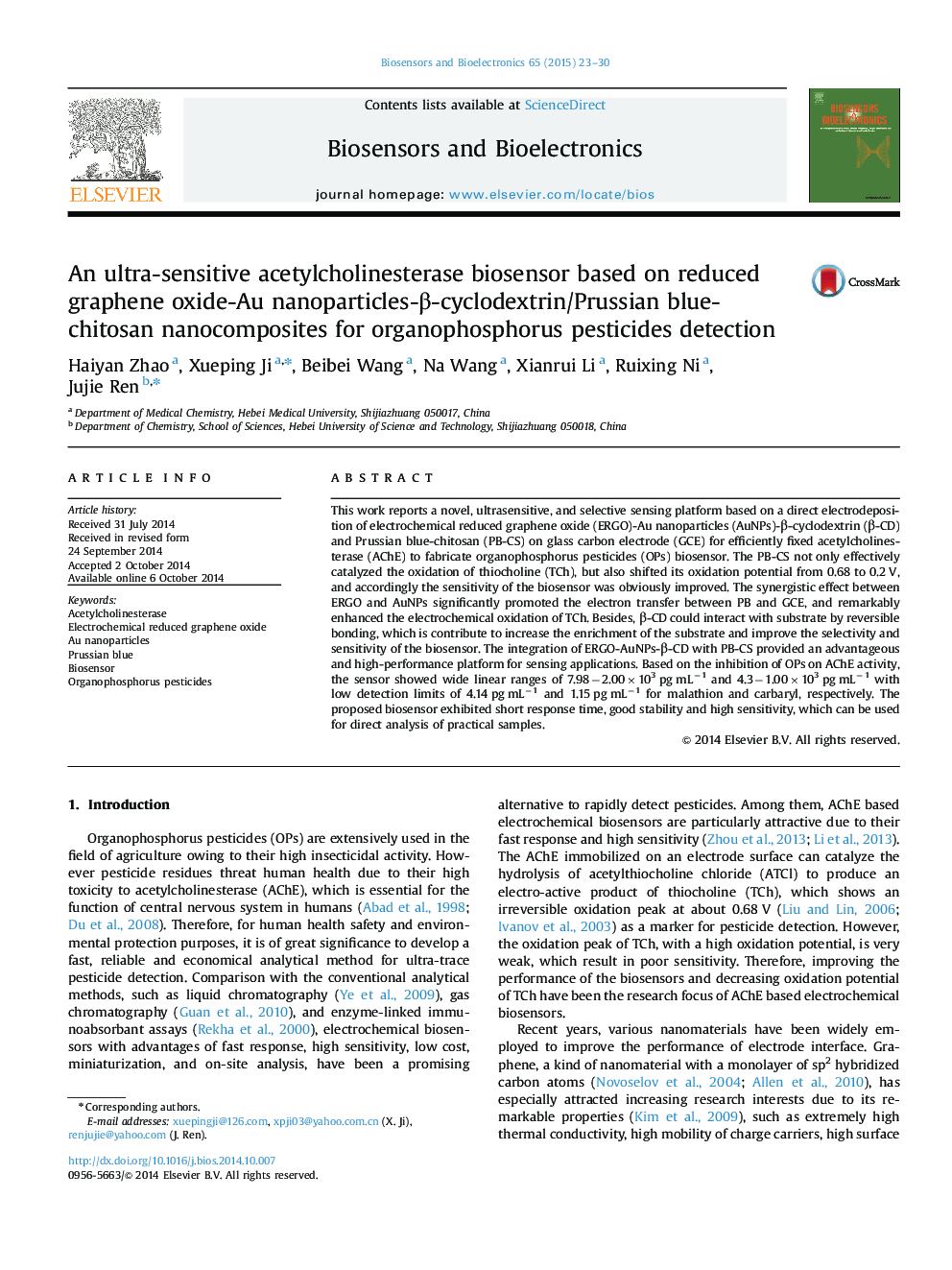| کد مقاله | کد نشریه | سال انتشار | مقاله انگلیسی | نسخه تمام متن |
|---|---|---|---|---|
| 866353 | 1470966 | 2015 | 8 صفحه PDF | دانلود رایگان |

• One-step electrodeposition of ERGO-AuNPs-β-CD on GCE is simple and controllable.
• The synergy between ERGO and AuNPs enhanced the sensitivity of the biosensor.
• β-CD is contribute to substrate enrichment due to reversible bonding interaction.
• Prussian blue could reduce the oxidation potential of thiocholine from 0.68 to 0.2 V.
• The biosensor exhibited a high sensitivity for the pesticides detection.
This work reports a novel, ultrasensitive, and selective sensing platform based on a direct electrodeposition of electrochemical reduced graphene oxide (ERGO)-Au nanoparticles (AuNPs)-β-cyclodextrin (β-CD) and Prussian blue-chitosan (PB-CS) on glass carbon electrode (GCE) for efficiently fixed acetylcholinesterase (AChE) to fabricate organophosphorus pesticides (OPs) biosensor. The PB-CS not only effectively catalyzed the oxidation of thiocholine (TCh), but also shifted its oxidation potential from 0.68 to 0.2 V, and accordingly the sensitivity of the biosensor was obviously improved. The synergistic effect between ERGO and AuNPs significantly promoted the electron transfer between PB and GCE, and remarkably enhanced the electrochemical oxidation of TCh. Besides, β-CD could interact with substrate by reversible bonding, which is contribute to increase the enrichment of the substrate and improve the selectivity and sensitivity of the biosensor. The integration of ERGO-AuNPs-β-CD with PB-CS provided an advantageous and high-performance platform for sensing applications. Based on the inhibition of OPs on AChE activity, the sensor showed wide linear ranges of 7.98−2.00×103 pg mL−1 and 4.3−1.00×103 pg mL−1 with low detection limits of 4.14 pg mL−1 and 1.15 pg mL−1 for malathion and carbaryl, respectively. The proposed biosensor exhibited short response time, good stability and high sensitivity, which can be used for direct analysis of practical samples.
Journal: Biosensors and Bioelectronics - Volume 65, 15 March 2015, Pages 23–30